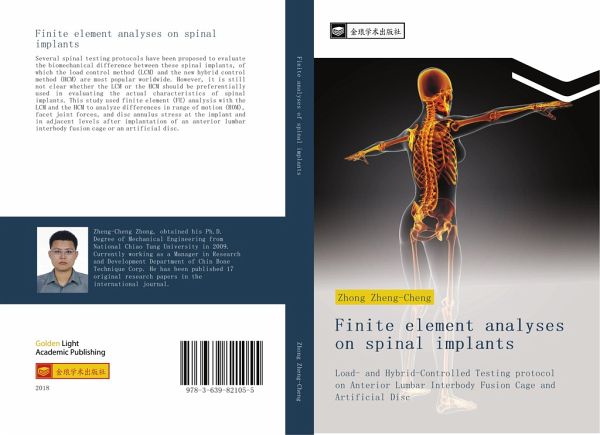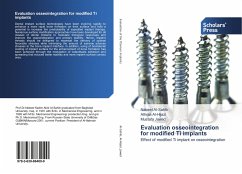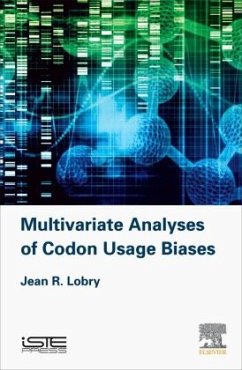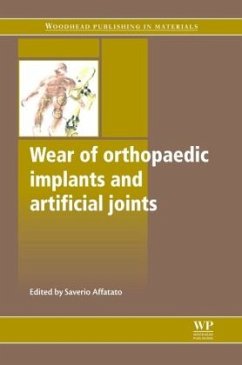
Finite element analyses on spinal implants
Load- and Hybrid-Controlled Testing protocol on Anterior Lumbar Interbody Fusion Cage and Artificial Disc
Versandkostenfrei!
Versandfertig in 1-2 Wochen
17,99 €
inkl. MwSt.

PAYBACK Punkte
9 °P sammeln!
Several spinal testing protocols have been proposed to evaluate the biomechanical difference between these spinal implants, of which the load control method (LCM) and the new hybrid control method (HCM) are most popular worldwide. However, it is still not clear whether the LCM or the HCM should be preferentially used in evaluating the actual characteristics of spinal implants. This study used finite element (FE) analysis with the LCM and the HCM to analyze differences in range of motion (ROM), facet joint forces, and disc annulus stress at the implant and in adjacent levels after implantation ...
Several spinal testing protocols have been proposed to evaluate the biomechanical difference between these spinal implants, of which the load control method (LCM) and the new hybrid control method (HCM) are most popular worldwide. However, it is still not clear whether the LCM or the HCM should be preferentially used in evaluating the actual characteristics of spinal implants. This study used finite element (FE) analysis with the LCM and the HCM to analyze differences in range of motion (ROM), facet joint forces, and disc annulus stress at the implant and in adjacent levels after implantation of an anterior lumbar interbody fusion cage or an artificial disc.












